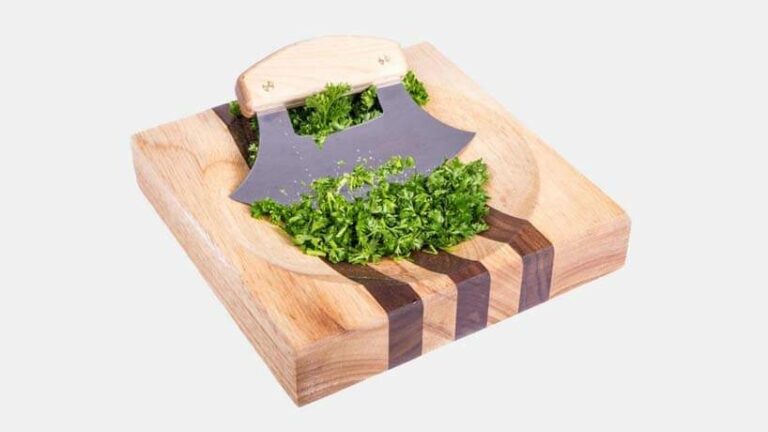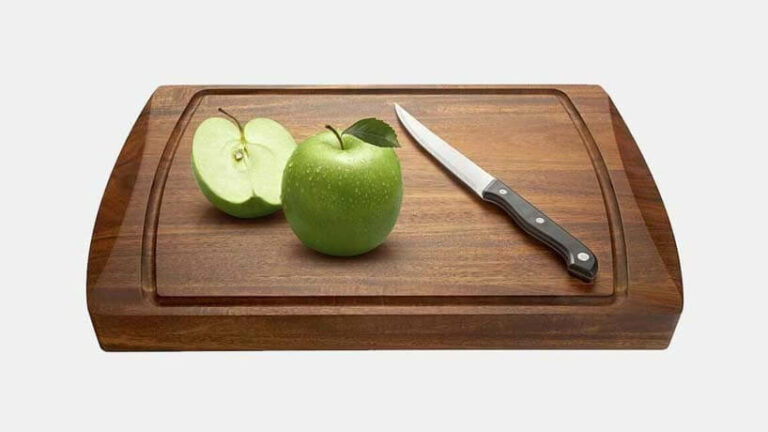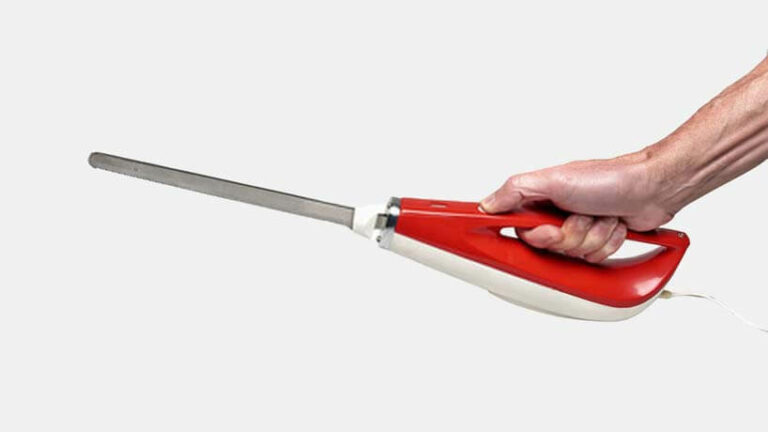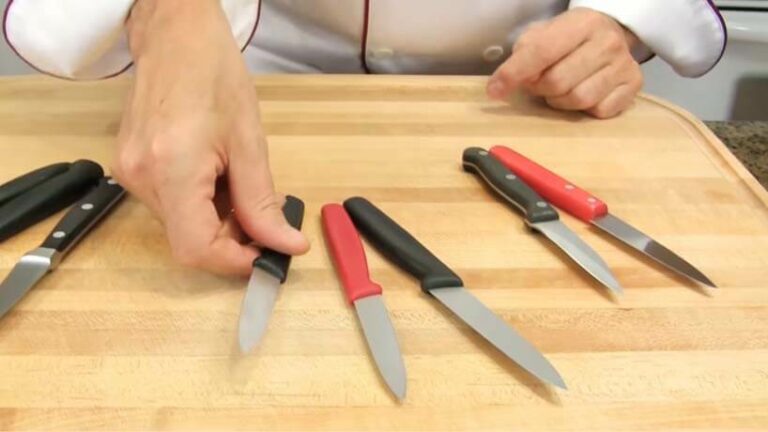How is it possible to have a knife made out of ceramic? Isn’t that what tiles and bathroom sinks are made out of? What even are the benefits of using a ceramic knife? That might be a thought that pops into your mind when you think of a ceramic item. But the reality is that these knives are NOT made of the same things like bathroom fixtures.
Instead, ceramic knives are made of a substance called Zirconium Dioxide. The problem with steel knives is the corrosive nature of steel and the likelihood of rust forming on the blade. As well as the quality of the steel, if you have a knife made with poor-grade steel, you’ll be sharpening that knife every day like it’s your birthday.
Ceramic knives or Zirconium knives are designed to reduce these factors hugely and will even eradicate them. So, what are the benefits of using a ceramic knife as opposed to a steel knife? Well, let’s find out.
Steel Knife Properties
Steel knives have been remarkably effective for a long time. There are still ongoing studies researching new ways to make steel knives last longer, perform better, and become tougher. However, the only problem is that to make that happen; you’ll have to raise the quality of the material to a near-impossible level to get the maximum results.
That makes the price of the knives go up significantly. Steel knives have a hardness rating on the Mohs scale of 4 and, when hardened, maybe 7 or 8. That is not bad, but if the steel is not hardened, then the knife will not last long at all. The blade will become dull quickly and will need to be sharpened every time you use it.
A knife that is low quality will be weak and prone to damage, corrosion, and rust. A hardened blade will retain its sharpness for longer but will suffer from a decrease in durability and toughness, meaning that the chef must be meticulous when handling it.
Steel knives also tend to leave a slight aftertaste on fresh foods like fruits and vegetables. And if the foods are stored after cutting, they tend to develop a noticeable brown color, making them seem like they are rotting. So what can be done about these problems, and how do ceramic knives differ on these points?
Ceramic Knife Properties
What is a ceramic knife, and what are the benefits of ceramic knives? As mentioned previously, ceramic blades are made from Zirconium Dioxide, but how does one make ceramic knives? The Zirconium material is put into a mold and blasted with scorching heat in a furnace. The heating process hardens the blade to a hardness of 8.5 on the Mohs scale, which is even harder and tougher than super-hardened steel.
After this, the mold is taken to a grinding wheel. There, an expert skillfully sharpens the blade to a specified degree. Then the expert applies a coating of diamond dust to push the blade to a level of unparalleled razor-sharpness. That is why ceramic knives are better and, to say the least, the reason why most high-end chefs have a least one ceramic knife in their kitchen.
They are extremely hard and tough; ceramic knives are very sharp and maintain that sharpness for a very long time without honing. The qualities of the material used to make the knives make them completely resistant to rust and corrosion from acidic foods. So it does shine a light on steel knife industries to push them in a direction that will end up in better knives for everyone.
Ceramic Knife Benefits

Strength
Steel knives are strong, yes, but there are still many grey areas as far as the quality of the steel goes. You have to be so careful when buying a chef’s knife or otherwise because the knife’s description is often false and untrue to the actual properties of the blade.
Ceramic knife blades don’t have this problem because ceramic knives only have one quality set. However, you can still find low-quality ceramic knives, but they are not nearly as common as steel ones.
Ceramic knives are superior in strength and durability, with features that overshadow steel knives, putting them to shame. Why these types of blades weren’t discovered earlier beats me; maybe, it has to do with a simple business principle to make sure that things don’t last too long, keeping the customers coming back for more.
Ceramic blades are not indestructible and should be used with care still. And for the best care of your blade edge, it may be a good idea to avoid cutting frozen foods or bones because the blades are rather thin on ceramic knives.
Price
The general trend is that ceramic knives are cheaper than high-end steel knives like Japanese knives. Which have more similar properties to ceramic knives than any other type. You do get expensive brands like Kyocera ceramic knives, which are top-of-the-range and very high performance. These still have a lower price than top-notch steel knives with unfathomably good qualities for a steel blade.
Weight
Ceramic zirconium dioxide is extremely lightweight after its heat treatment process, making the knives much lighter than Japanese steel or German high carbon steel knives. Some people say that they don’t enjoy using light knives and others love that they are not super heavy. Lightweight knives are great for long stints in the kitchen and when you’re chopping up enough vegetables to feed a small army.
In that case, you don’t want to be holding a massive butcher knife for over an hour because your hands and shoulders will get tired very quickly. However, if you’re a precision chef and need to perform complicated cuts, you’ll need to have a very well-balanced blade to give you maximum control when cutting.
Sushi chefs often have to perform specialty cuts, and so they need a comfortable and ergonomic knife to aid the procedure. Ceramic knives can’t deliver that kind of balance. So it is better to keep them for more standard, more manageable tasks.
Final Thoughts
After all is said and done, there’s no denying that ceramic knives are a marvelous invention and will continue to flood the marketplace with newfound benefits for home and commercial kitchens all over the world. Steel knives will always have their place, and nothing will be able to undo the fantastic job they have done for us thus far.
High-end steel knives are a beauty that should remain unblemished because they are excellent at what they can achieve. No knife is perfect, and they all have their pros and cons. But in the end, there will always be a winner in some way or another. For us, we couldn’t look past the brilliance of ceramic knives.
That’s not to say that steel knives or any other knives are terrible and worthless. Steel knives still are worthy, but we would side with ceramic. So now it’s up to you. What are the benefits of using a ceramic knife? Experience it for yourself, and then make a decision!







